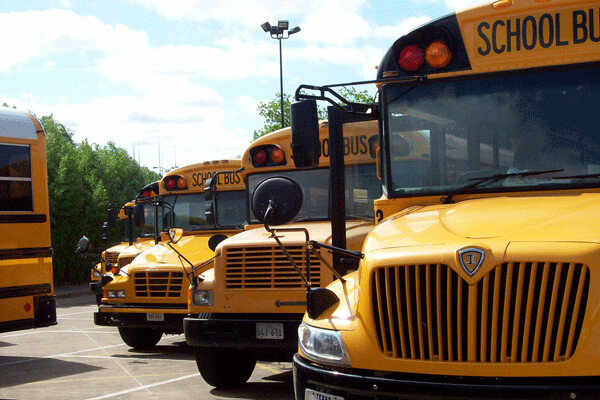News & Articles
Browse all content by date.

Dear EarthTalk: I’ve heard that school buses cause a lot of pollution, especially for the kids riding inside. Is anyone making greener school buses yet? - Jake McConnell, Philadelphia, PA
Now that school is back in session, those big yellow diesel-fueled school buses are all over the roads again. While they’re relatively safe—and definitely old school—they’re also big polluters, chugging along at 4-6 miles to the gallon while creating a cloud of harmful airborne pollutants.
According to the non-profit Clean Air Trust (CAT), some 25 million American kids travelling on half a million school buses every day are exposed to five to 15 times more air toxins than the rest of us. “Those buses travel more than four billion miles each year and these kids spend three billion hours on [them],” reports the group. “About 90 percent of these buses run on diesel fuel, annually emitting 3,000 tons of cancer-causing soot and 95,000 tons of smog-causing compounds.”
If you don’t think all that pollution is having a negative effect, think again. A March 2019 study from researchers at Georgia State University found that students did significantly better on standardized English tests and marginally better in math when they spent their commutes riding in school buses retrofitted to reduce emissions by 95 percent as compared to students riding in non-upgraded buses. The researchers conclude that “engine retrofits can have meaningful and cost-effective impacts on health and cognitive functioning.”
Luckily the retrofits are easy to come by and relatively inexpensive, especially when you factor in the costs of health care to treat sick kids, not to mention the price tag for raising kids’ test scores in other ways. Retrofitting 10 percent of the average school district’s bus fleet in Georgia, for instance, would cost less than $100,000, a drop in the bucket of the state’s $10.6 billion K-12 public schools budget. And beginning in October 2018, the U.S. Environmental Protection Agency (EPA) set aside $9 million to help pay for upgrading older diesel school buses nationwide. School districts and other public agencies charged with transporting school kids can apply for rebates of up to $20,000 per bus to help cover the retrofits on up to 10 individual buses.
Retrofitting is a great start, but even better would be replacing old buses with new, more efficient all-electric models. But few school districts can justify the $300,000 price tag to replace perfectly functional older diesel buses. That didn’t stop the school district in White Plains, New York, though, which purchased five electric buses last year with financial help from the local utility, Consolidated Edison, and a grant from the state.
These outside contributions helped bring the final cost to the school district down to something along the lines of buying new diesel buses. While ConEd gets the benefit of good public relations and good karma, it also gets to use the buses during the summer as excess electricity storage that can be moved around to where it’s needed most (when the air conditioners are blazing). White Plains is hoping other school districts across the country will follow a similar model to clean up their acts.
CONTACTS: Clean Air Trust, cleanairtrust.org; “School bus emissions, student health and academic performance,” sciencedirect.com/science/article/abs/pii/S0272775719301530#!.
EarthTalk® is produced by Roddy Scheer & Doug Moss for the 501(c)3 nonprofit
EarthTalk. See more at https://emagazine.com. To donate, visit https://earthtalk.org. Send questions to: question@earthtalk.org.
| Tweet |


